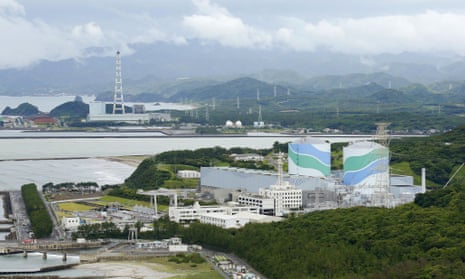Japan has moved closer to a return to nuclear power, more than three years after the Fukushima disaster, after a town in the country’s south-west voted to approve two reactors coming back online.
Nineteen of 26 assembly members in Satsumasendai, located 600 miles south-west of Tokyo, voted in favour of restarting the Sendai nuclear power plant. Four voted against and three abstained.
The vote does not mean the reactors, the first to win approval to restart since the introduction of stringent new safety requirements, will go back online immediately.
The plant, operated by Kyushu Electric Power, must pass operational safety checks, and officials in Kagoshima prefecture, where the town is located, also have to give their consent. That means the plant’s two reactors are unlikely to be restarted until next year, officials said.
The move will be a boost to the prime minister, Shinzo Abe, who supports a gradual return to nuclear power as Japan confronts rising costs of imported oil and gas, and doubts about its ability to meet climate change commitments. Aware that a majority of Japanese opposes a return to nuclear power, Abe has said he would leave the final decision on whether to approve the restarts to local communities.
Greenpeace said Tuesday’s vote “starkly contradicts” the views of most people near the Sendai plant. “There are many significant unanswered or ignored safety questions – these must be addressed publicly and to the satisfaction of the people whose lives and livelihoods are threatened by a potential restart of the Sendai reactors,” said Greenpeace Japan’s nuclear campaigner Ai Kashiwagi.
Like many other towns located near atomic facilities, Satsumasendai’s economy was heavily dependent on nuclear power. All of Japan’s reactors were switched off after the 11 March 2011 disaster, in which three reactors at the Fukushima Daiichi power plant went into meltdown after it was struck by a huge earthquake and tsunami.
The disaster forced the evacuation of 160,000 people and contaminated communities around the plant. Many evacuees are still unable to return home owing to high radiation levels.
All 48 of the country’s reactors were closed in the aftermath of Fukushima to undergo newly introduced safety checks, forcing Japan to increase its dependence on fossil fuels. Before Fukushima, nuclear had provided 30% of the country’s energy needs, and there were plans to increase its share to around 50% by 2030.
The debate about the Sendai plant has split communities. The “host” town of Satsumasendai receives billions of yen in government and industry subsidies. But Ichikikushikino, which lies slightly further away from the plant, receives only a fraction of that, even though residents say they would face similar health risks from radiation leaks in the event of an accident.
This year, more than half of the 30,000 residents of Ichikikushikino signed a petition opposing the restart. The issue has been complicated by concerns over a volcano located 40 miles away that scientists say is showing signs of increased activity that could cause a small eruption.
Mount Ioyama has recently been shaken by small tremors and showed signs other signs of rising volcanic activity, including a tremor lasting seven minutes, the Japan Meteorological Agency said.





Comments (…)
Sign in or create your Guardian account to join the discussion